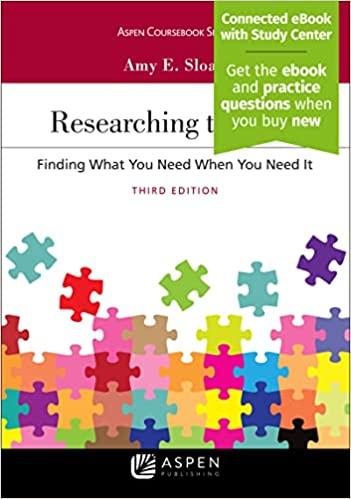Answered step by step
Verified Expert Solution
Question
1 Approved Answer
(Canadian Law)For each of the following cases, what is the offender's sentence? Decide upon a sentence for the offender. Outline the rationale for your decision,
(Canadian Law)For each of the following cases, what is the offender's sentence? Decide upon a sentence for the offender. Outline the rationale for your decision, including which sentencing objective is most important. (The maximum sentence allowed for the offence is shown in parentheses at the end of each case.) Campbell had been drinking in a bar all evening when he exchanged words with the 59-year-old victim. The words led to blows, and the two men had to be separated by bar staff. Later that evening, the victim left the premises, Campbell followed him out, and a fight started. Witnesses testified that, after the victim was on the ground and defenceless, Campbell punched and kicked him in the face. The force of the blows caused the cheekbone to break away from the base of the victim's skull and he died. It was determined that both men were heavily intoxicated while fighting. Campbell pleaded guilty to the lesser charge of manslaughter. His lawyer asked for leniency in Campbell's sentencing because he had no prior convictions for violent crimes and he had been slightly provoked by the victim. Also, he acknowledged his alcohol problem, showed genuine remorse for what hap- pened, and had been in detention for nine months pending trial. (life imprisonment)
Step by Step Solution
There are 3 Steps involved in it
Step: 1

Get Instant Access to Expert-Tailored Solutions
See step-by-step solutions with expert insights and AI powered tools for academic success
Step: 2

Step: 3

Ace Your Homework with AI
Get the answers you need in no time with our AI-driven, step-by-step assistance
Get Started


